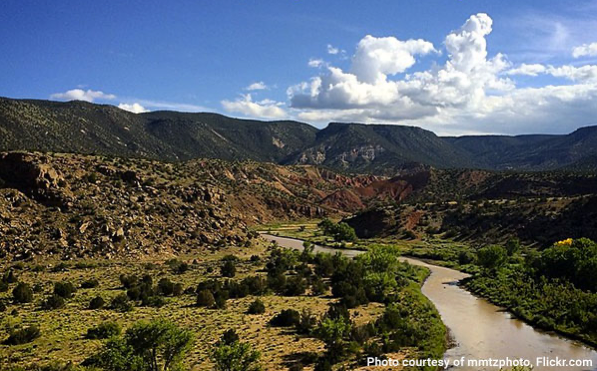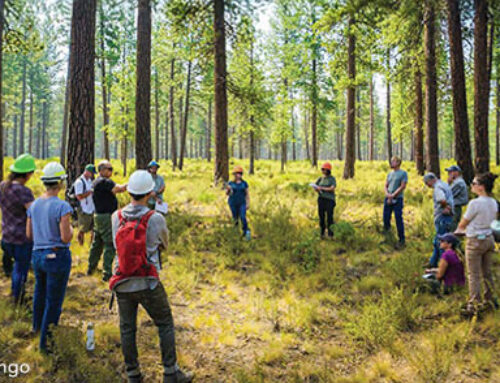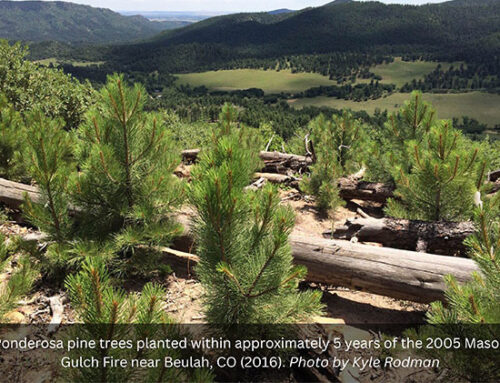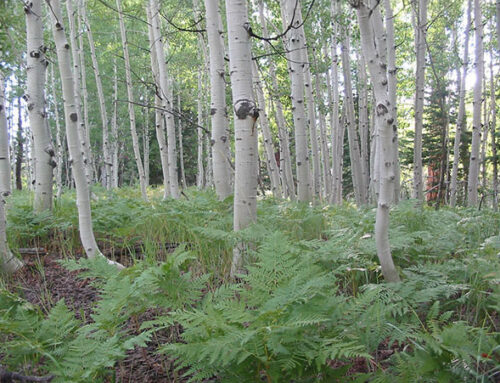Climate change represents one of the most complex and unique challenges for natural resource management and poses an existential threat to sustaining the nation’s forests and grasslands. It is well documented that wildfires across the western US have increased in size, frequency, and severity since the 1950s. These changes are closely linked with increases in temperature and an increased frequency and intensity of drought.
Land management agencies recognize there is a growing need to incorporate climate science into natural resource decision-making. To help land managers as they work to better understand science-based adaptation strategies, the ERI is partnering with the US Forest Service Southwestern Region (R3) to help build a regional climate adaptation strategy. Our effort builds on the existing climate change science in the Southwest and will integrate with forest plans, the R3 analysis framework for landscape-scale projects, and other conventions of the Southwestern Region.
A body of research at ERI and elsewhere supports the urgent need for active management and restoration work to protect and enhance at-risk ecosystems that provide life-sustaining services, as well as communities at risk from wildfire. The ERI works to translate and transfer this science to inform decision making and policy that seeks to avoid catastrophic wildfire and mitigate the effects of climate change. To view the latest ERI climate change research and science syntheses as they relate to forest restoration and wildfires, click here.
White Paper: Wildfire Trends Across the Western US: Forest Fires Have Increased in Size, Severity, and Frequency Across Western Forests
https://cdm17192.contentdm.oclc.org/digital/collection/p17192coll1/id/1043/rec/28
Working Paper: Strategies for Enhancing and Restoring Rare Plants and Their Habitats in the Face of Climate Change and Habitat Destruction in the Intermountain West
https://cdm17192.contentdm.oclc.org/digital/collection/p17192coll1/id/141/rec/1
Working Paper: Climate Change Impacts on Bark Beetle Outbreaks and the Impact of Outbreaks on Subsequent Fires
https://cdm17192.contentdm.oclc.org/digital/collection/p17192coll1/id/490/rec/2
Working Paper: Climate Change and Fire in the Southwest
https://cdm17192.contentdm.oclc.org/digital/collection/p17192coll1/id/680/rec/3
Fact Sheet: Forest Restoration and Carbon Sequestration
https://cdm17192.contentdm.oclc.org/digital/collection/p17192coll1/id/229/rec/1
Fact Sheet: Modeling Aquifer Response to Large-scale Restoration Treatments and Climate Change
https://cdm17192.contentdm.oclc.org/digital/collection/p17192coll1/id/646/rec/2
Fact Sheet: Five-Year Post-Restoration Conditions and Simulated Climate Change Trajectories in a Warm-Dry Mixed-Conifer Forest
https://cdm17192.contentdm.oclc.org/digital/collection/p17192coll1/id/824/rec/3
Five-year post-restoration conditions and simulated climate change trajectories in a warm/dry mixed-conifer forest, southwestern Colorado, USA
https://cdm17192.contentdm.oclc.org/digital/collection/p17192coll1/id/570/rec/2
Forest structure and regeneration responses 15 years after wildfire in a ponderosa pine and mixed-conifer ecotone, Arizona, USA
https://cdm17192.contentdm.oclc.org/digital/collection/p17192coll1/id/939/rec/1
Simulating post-wildfire forest trajectories under alternative climate and management scenarios
https://cdm17192.contentdm.oclc.org/digital/collection/p17192coll1/id/384/rec/1
Using trait-based ecology to restore resilient ecosystems: historical conditions and the future of montane forests in western North America
https://cdm17192.contentdm.oclc.org/digital/collection/p17192coll1/id/71/rec/4
Spatial patterns of ponderosa pine regeneration in high-severity burn patches
https://cdm17192.contentdm.oclc.org/digital/collection/p17192coll1/id/897/rec/2
Effectiveness of fuel reduction treatments: assessing metrics of forest resiliency and wildfire severity after the Wallow Fire, AZ
https://cdm17192.contentdm.oclc.org/digital/collection/p17192coll1/id/157/rec/7
A meta-analysis of management effects on forest carbon storage
https://cdm17192.contentdm.oclc.org/digital/collection/p17192coll1/id/126/rec/2
Effects of Climate Variability and Accelerated Forest Thinning on Watershed-Scale Runoff in Southwestern USA Ponderosa Pine Forests
https://cdm17192.contentdm.oclc.org/digital/collection/p17192coll1/id/875




